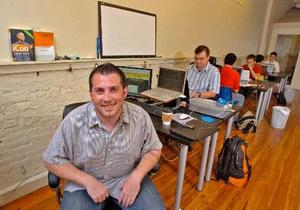Some of us believe that the government should not discriminate on the basis of race, gender, or religion. Unfortunately, governments in the past and present have sometimes mandated or practiced discrimination. Examples from the past would include the Jim Crow laws that mandated racial discrimination against Afro-Americans.
A present example would be the mis-named “affirmative action” laws that mandate racial discrimination against whites.
In the article quoted below, note who has taken a stand on which side of this issue.
Is it appropriate for the University of Nebraska Foundation to be donating $25,000 to support the continuation of racial discrimination?
Note also the opposing positions of two 2006 Republican candidates for Senate: David Kramer is leading the drive to continue racial discrimination, while Pete Ricketts is contributing to ending racial discrimination.
(p. 1A) LINCOLN — Leaders of the Nebraska Civil Rights Initiative called their anti-affirmative-action push one of the most successful petition drives in recent state history. But it’s not yet known whether their proposed ban will go before voters in November.
“The citizens demand the opportunity to vote on the use of race and gender preferences and discrimination in state hiring, state contracts and state education,” said Marc Schniederjans, treasurer of the group that said it submitted more than 167,000 signatures Thursday.
. . .
David Kramer, spokesman for the opposition group Nebraskans United, said he wasn’t disheartened by the number of petition signatures or over the prospect that petition organizers said they planned to submit more signatures today.
. . .
(p. 2A) Connerly’s American Civil Rights Coalition provided $370,750 of the $467,250 raised by the Nebraska petition group as of June 25. According to state records, the next largest donors were Paul Singer, a New York businessman, $50,000; William Grewcock, a former executive with Peter Kiewit Sons Inc., $25,000; and failed GOP U.S. Senate candidate Pete Ricketts, $25,000.
For Nebraskans United, the largest donations toward that group’s $308,167 war chest have come from Omaha billionaire Warren Buffett, $50,000; philanthropist Richard Holland, $50,000; Dianne Lozier, Lozier corporate counsel, $50,000; Wallace Weitz, president of an Omaha-based mutual fund management company, $50,000; the Greater Omaha Chamber of Commerce, $36,250; the University of Nebraska Foundation, $25,000; and the Nebraska State Education Association, $25,000.
For the full story, see:
MARTHA STODDARD. “Petitions Turned In; Fight Far from Over.” Omaha World-Herald (Fri., July 4, 2008): 1A-2A.
(Note: ellipses added.)
(Note: the online title of the article is “Anti-affirmative-action petitions turned in; verifying to begin.”)




